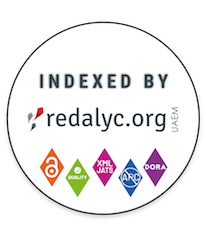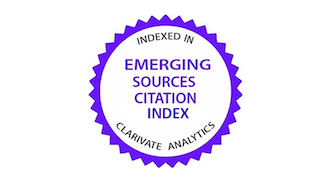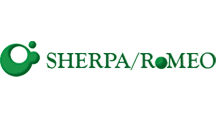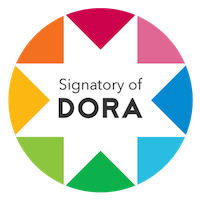Prevalence of AHPND in shrimp farms of the Nicoya Gulf and Central Pacific, Costa Rica
DOI:
https://doi.org/10.15517/am.2024.59110Keywords:
white shrimp, Penaeus vannamei, PCR, pirA/pirBAbstract
Introduction. The acute hepatopancreas necrosis disease (AHPND) is caused by bacteria Vibrio parahaemolyticus containing a plasmid encoding the toxin genes pirA and pirB. The disease is characterized by massive sloughing of epithelial cells in the hepatopancreas, also showing atrophy and discoloration of that organ. Diseased shrimp display anorexia with empty guts, weakness, body discoloration and high mortality. Objective. To determine the prevalence of Vibrio parahaemolyticus causing AHPND in farms that grow shrimp in the Pacific zone of Costa Rica. Materials and methods. During the years 2019 and 2020, water and shrimp (Penaeus vannamei) samples were obtained from 32 farms located on the western coast of the Nicoya Gulf (Northwest Costa Rica) and the Central Pacific coast (Puntarenas-Parrita). The samples were analyzed by endpoint polymerase chain reaction (PCR) using different protocols and primers to detect the toxins pirA and pirB. Further, a linear correlation between the presence of AHPND and water quality was done using the R statistical program. Results. The presence of Vibrio parahaemolyticus causing AHPND occurred in 93.75 % (30/32) of sampled ponds in both farming areas. Conclusion. This work confirms the presence and wide distribution of AHPND in water and shrimp from thirty shrimp farms in the Costa Rican Pacific.
Downloads
References
Aguirre-Guzmán, G., Mejía, H., & Ascencio, F. (2004). A review of extracellular virulence product of Vibrio species important in diseases of cultivated shrimp. Aquaculture Research, 35(15), 1395–1404. https://doi.org/10.1111/j.1365-2109.2004.01165.x
Altschul, S. F., Gish, W., Miller, W., Myers, E. W., & Lipman, D. J. (1990). Basic local alignment search tool. Journal of Molecular Biology, 215(3), 403–410. https://doi.org/10.1016/S0022-2836(05)80360-2
Amal, M. N. A., Zamri-Saad, M., Siti-Zahrah, S., & Zulkafli, A. R. (2015). Water quality influences the presence of Streptococcus agalactiae in cage cultured red hybrid tilapia, Oreochromis niloticus × Oreochromis mossambicus. Aquaculture Research, 46(2), 313–323.
Ananda Raja, R., Sridhar, R., Balachandran, C., Palanisammi, A., Ramesh, S., & Nagarajan, K. (2017). Pathogenicity profile of Vibrio parahaemolyticus in farmed Pacific white shrimp, Penaeus vannamei. Fish and Shellfish Immunology, 67, 368–381. https://doi.org/10.1016/j.fsi.2017.06.020
Boyd, C. E., & Tucker, C. S. (1998). Pond aquaculture water quality management. Chapman and Hall.
Castresana, J. (2000). Selection of conserved blocks from multiple alignments for their use in phylogenetic analysis. Molecular Biology and Evolution, 17(4), 540–552. https://doi.org/10.1093/oxfordjournals.molbev.a026334
Chumpol, S., Kantachote, D., Nitoda, T., & Kanzaki, H. (2017). The roles of probiotic purple nonsulfur bacteria to control water quality and prevent acute hepatopancreatic necrosis disease (AHPND) for enhancement growth with higher survival in white shrimp (Litopenaeus vannamei) during cultivation. Aquaculture, 473, 327–336. https://doi.org/10.1016/j.aquaculture.2017.02.033
Darriba, D., Taboada, G. L., Doallo, R., & Posada, D. (2012). jModelTest 2: more models, new heuristics and parallel computing. Nature Methods, 9(8), Article 772. https://doi.org/10.1038/nmeth.2109
Dhar, A. K., Roux, M. M., & Klimpel, K. R. (2001). Detection and quantification of infectious hypodermal and hematopoietic necrosis virus and white spot virus in shrimp using real-time quantitative PCR and SYBR Green chemistry. Journal of Clinical Microbiology, 39(8), 2835–2845. https://doi.org/10.1128/JCM.39.8.2835-2845.2001
Dong, X., Hailiang, V., Xie, G., Peizhuo, Z., Chengcheng, G., Yan, L., & Huang, J. (2017). An isolate of Vibrio campbellii carrying the pirVP gene causes acute hepatopancreatic necrosis disease. Emerging Microbes & Infections, 6, 1–3. https://doi.org/10.1038%2Femi.2016.131
Escobar, J. (2002). La contaminación en los ríos y sus efectos en las áreas marinas y costeras. Comisión Económica para América Latina y el Caribe.
Escobedo-Bonilla, C. M. (2016). Emerging infectious diseases affecting farmed shrimp in Mexico. Austin Journal Biotechnology & Bioengineering, 3(2), Article 1062. https://austinpublishinggroup.com/biotechnology-bioengineering/fulltext/ajbtbe-v3-id1062.php
Eshik, M. M., Abedin, M. M., Punom, N., Begum, M. K., & Rahman, M. S. (2018). Molecular identification of AHPND positive Vibrio Parahaemolyticus causing an outbreak in south-west shrimp farming regions of Bangladesh. Journal of Bangladesh Academy of Sciences, 41(2), 127–135. https://doi.org/10.3329/JBAS.V41I2.35492
Han, J., Tang, K., & Lightner, D. V. (2015). Genotyping of virulence plasmid from Vibrio parahaemolyticus isolates causing acute hepatopancreatic necrosis disease in shrimp. Disease Aquatic Organisms, 115, 245–251. http://dx.doi.org/10.3354/dao02906
Hong, X., Lu, L., & Xu, D. (2016). Progress in research on acute hepatopancreatic necrosis disease (AHPND). Aquaculture International, 24, 577–593. https://doi.org/10.1007/s10499-015-9948-x
Instituto Costarricense de Pesca y Acuicultura. (s.f.). Precios y volúmenes de productos pesqueros y acuícolas ofrecidos en mercado mayorista de CENADA. Recuperado 2023 de https://bpm.pima.go.cr/CM.aspx?id=32
Katoh, K., Rozewicki, J., & Yamada, K. D. (2019). MAFFT online service: multiple sequence alignment, interactive sequence choice and visualization. Briefings in Bioinformatics, 20(4), 1160–1166. https://doi.org/10.1093/bib/bbx108
Kawatsu, K., Sakata, J., Yonekita, T., & Kumeda, Y. (2015). Evaluation of an immunochromatographic assay for direct identification of thermostable direct hemolysin-producing Vibrio parahaemolyticus colonies on selective agar plates. Journal of Microbiological Methods, 119, 4–6. https://doi.org/10.1016/j.mimet.2015.09.020
Kumar, B. K., Deekshit, V. K., Rai, P., Shekar, M., Karunasagar, I., & Karunasagar, I. (2014). Presence of T3SS2β genes in trh+ Vibrio parahaemolyticus isolated from seafood harvested along Mangalore coast, India. Letter Applied Microbiology, 58, 440–446. https://doi.org/10.1111/lam.12210
Kumar, V., Roy, S., Behera, B. K., Bossier, P., & Das, B. K. (2021). Acute hepatopancreatic necrosis disease (AHPND): virulence, pathogenesis and mitigation strategies in shrimp aquaculture. Toxins, 13(8), Article 524. https://doi.org/10.3390/toxins13080524
Lai, H. C., Ng, T. H., Ando, M., Lee, C. T., Chen, I. T., Chuang, J. C., Mavichak, R., Chang, S. H., Yeh, M. D., Chiang, Y. A., Takeyama, H., Hamaguchi, H. O., Lo, C. F., Aoki, T., & Wang, H. C. (2015). Pathogenesis of acute hepatopancreatic necrosis disease (AHPND) in shrimp. Fish & Shellfish Immunology, 47(2), 1006–1014. https://doi.org/10.1016/j.fsi.2015.11.008
Lightner, D. V. (2011). Virus diseases of farmed shrimp in the Western Hemisphere (the Americas): A review. Journal of Invertebrate Pathology, 106(1), 110–130. https://doi.org/10.1016/j.jip.2010.09.012
Morales-Covarrubias, M. S. (2004). Enfermedades del camarón: detección mediante análisis en fresco e histopatología. Editorial Trillas.
Morales-Covarrubias, M. S., García-Aguilar, N., Bolan-Mejía, M., & Zamora-García, O. G. (2019). Prevalence of the major diseases in Penaeus vannamei farmed of Sinaloa México. Revista Científica, 29(3), 198–206. https://produccioncientificaluz.org/index.php/cientifica/article/view/32298/33713
Morales-Covarrubias, M. S., & Goméz-Gil, B. (2014). Enfermedades bacterianas. Organismo Internacional Regional de Sanidad Agropecuaria.
Nguyen, H. T., Van, T. N., Ngoc, T. T., Boonyawiwat, V., Rukkwamsuk, T., & Yawongsa, A. (2021). Risk factors associated with acute hepatopancreatic necrosis disease at shrimp farm level in Bac Lieu Province, Vietnam. Veterinary World, 14(4), 1050–1058. https://doi.org/10.14202/vetworld.2021.1050-1058
Nimrat, S., Suksawat, S., Boonthai, T., & Vuthiphandchai, V. (2012). Potential Bacillus probiotics enhance bacterial numbers, water quality and growth during early development of white shrimp (Litopenaeus vannamei). Veterinary Microbiology, 159, 443–450. https://doi.org/10.1016/j.vetmic.2012.04.029
Nunan, L., Lightner, D. V., Pantoja, C., & Gómez-Jiménez, S. (2014). Detection of acute hepatopancreatic necrosis disease (AHPND) in Mexico. Disease Aquatic Organisms, 111, 81–86. https://doi.org/10.3354/dao02776
Organización de las Naciones Unidas para la Alimentación y la Agricultura. (2022). El estado mundial de la pesca y la acuicultura 2022. Hacia la transformación azul. https://doi.org/10.4060/cc0461es
Pantoja, C., & Lightner, D. V. (2014). EMS/AHPND descripción de la enfermedad en Asia y América. Organismo Internacional Regional de Sanidad Agropecuaria.
Peña Navarro, N., & Chacón Guzmán, J. (2019). Aquaculture in Costa Rica. World Aquaculture, 50(2), 23–28. https://www.was.org/Magazine/Vol/50/2
Peña-Navarro, N., Castro-Vásquez, R., Vargas-Leitón, B., & Dolz, G. (2020). Molecular detection of acute hepatopancreatic necrosis disease (AHPND) in Penaeus vannamei shrimps in Costa Rica. Aquaculture, 523, Article 735190. https://doi.org/10.1016/j.aquaculture.2020.735190
Peña-Navarro, N., Vargas-Cordero, R., & Varela-Mejías, A. (2013). Productos naturales como estimuladores del sistema inmunológico de Litopenaeus vannamei, infectado con Vibrio parahaemolyticus. Agronomía Mesoamericana, 24(1), 133–147. https://doi.org/10.15517/am.v24i1.9790
Phiwsaiya, K., Charoensapsri, W., Taengphu, S., Dong, H. T., Sangsuriya, P., Nguyen, G. T. T., Pham, H. Q., Amparyup, P., Sritunyalucksana, K., Taengchaiyaphum, S., Chaivisuthangkura, P., Longyant, S., Sithigorngul, P., & Senapin, S. (2017). A natural Vibrio parahaemolyticus ΔpirAVp pirBVp+ mutant kills shrimp but produces neither PirVp toxins nor acute hepatopancreatic necrosis disease lesions. Applied Environmental Microbiology, 83(16), Article e00680-1. https://doi.org/10.1128/aem.00680-17
R Core Team. (2021). R: A language and environment for statistical computing. R Foundation for Statistical Computing. https://www.R-project.org/
Rambaut, A. (2007). FigTree [Computer software, Version 1.4.4]. GitHub. http://tree.bio.ed.ac.uk/software/figtree/
Ramírez Flores, S., Sánchez Godínez, C., Villalobos Rojas, F., Jiménez Ramón, J. A., Josephy Hernández, I. L., Barrantes Nuñez, M., & Salas Moya, C. (2023). Antecedentes y situación actual de la maricultura en Costa Rica, con énfasis en el cultivo de camarón en el Golfo de Nicoya. Fundación MarViva.
Shrimp News International. (2015). Belize recovers from EMS. https://www.shrimpnews.com/FreeReportsFolder/NewsReportsFolder/MexicoAndBelizeElNinoAndEMS
Silvestro, D., & Michalak, I. (2012). raxmlGUI: a graphical front-end for RAxML. Organisms Diversity & Evolution, 12(4), 335–337. http://dx.doi.org/10.1007/s13127-011-0056-0
Sirikharin, R., Taengchaiyaphum, S., Sanguanrut, P., Chi, T. D., Mavichak, R., Proespraiwong, P., Nuangsaeng, B., Thitamadee, S., Flegel, T. W., & Sritunyalucksana, K. (2015) Characterization and PCR detection of binary, Pir-Like toxins from Vibrio parahaemolyticus isolates that cause Acute Hepatopancreatic Necrosis Disease (AHPND) in shrimp. PLoS ONE, 10(5), Article e0126987. https://doi.org/10.1371/journal.pone.0126987
Suárez, M. G., Medina, Z., Montiel, M., Ibarra, J., & Salcedo, A. (2015). Distribución de Vibrio spp. En agua y sedimento de estanques productores de camarón Litopenaeus vannamei cultivados con agua del lago de Maracaibo (Venezuela). Revista Científica, 25(4), 293–299.
Tendencia, E. A., Bosma, R. H., & Verreth, J. A. J. (2010). WSSV risk factors related to water physico-chemical properties and microflora in semi-intensive Penaeus monodon culture ponds in the Philippines. Aquaculture, 302, 164–168. https://doi.org/10.1016/j.aquaculture.2010.03.008
Theethakaew, C., Nakamura, S., Motooka, D., Matsuda, S., Kodama, T., Chonsin, K., Suthienkul, O., & Iida, T. (2017). Plasmid dynamics in Vibrio parahaemolyticus strains related to shrimp acute hepatopancreatic necrosis syndrome (AHPNS). Infectionic Evolution, 51, 211–218. https://doi.org/10.1016/j.meegid.2017.04.007
Tinwongger, S., Proespraiwong, P., Thawonsuwan, J., Sriwanayos, P., Kongkumnerd, J., Chaweepack, T., Mavichak, R., Unajak, S., Reiko, N., Hidehiro, K., & Ikuo, H. (2014). Development of PCR diagnosis for shrimp acute hepatopancreatic necrosis disease (AHPND) strain of Vibrio parahaemolyticus. Fish Pathology, 49(4), 159–164. https://doi.org/10.3147/jsfp.49.159
Tran, L., Nunan, L., Redman, R., Mohney, L., Pantoja, C., Fitzsimmons, K., & Lightner, D. V. (2013). Determination of the infectious nature of the agent of acute hepatopancreatic necrosis syndrome affecting penaeid shrimp. Disease Aquatic Organisms, 105, 45–55. https://doi.org/10.3354/dao02621
Varela Mejías, A., & Peña Navarro, N. (2014). Síndrome de la mortalidad temprana (EMS/AHPNS) en camarones cultivados: una revisión. Repertorio Científico, 17(1), 25–30. https://revistas.uned.ac.cr/index.php/repertorio/article/view/2563
Varela Mejías, A., & Peña Navarro, N. (2015). Hepatopancreatitis necrotizante asociada al fenómeno del Niño, en cultivos de camarones del Golfo de Nicoya. Repertorio Científico, 18(1), 29–34. https://revistas.uned.ac.cr/index.php/repertorio/article/view/2553
Varela-Mejías, A., & Peña-Navarro, N. (2016). Histopatología diferencial de tres enfermedades bacterianas que afectan el hepatopáncreas de camarones peneidos. Agronomía Mesoamericana, 27(1), 73–80. https://doi.org/10.15517/am.v27i1.21887
Xu, X., Wu, Q., Zhang, J., Cheng, J., Zhang, S., & Wu, K. (2014). Prevalence, pathogenicity, and serotypes of e in shrimp from Chinese retail markets. Food Control, 46, 81–85. https://doi.org/10.1016/j.foodcont.2014.04.042
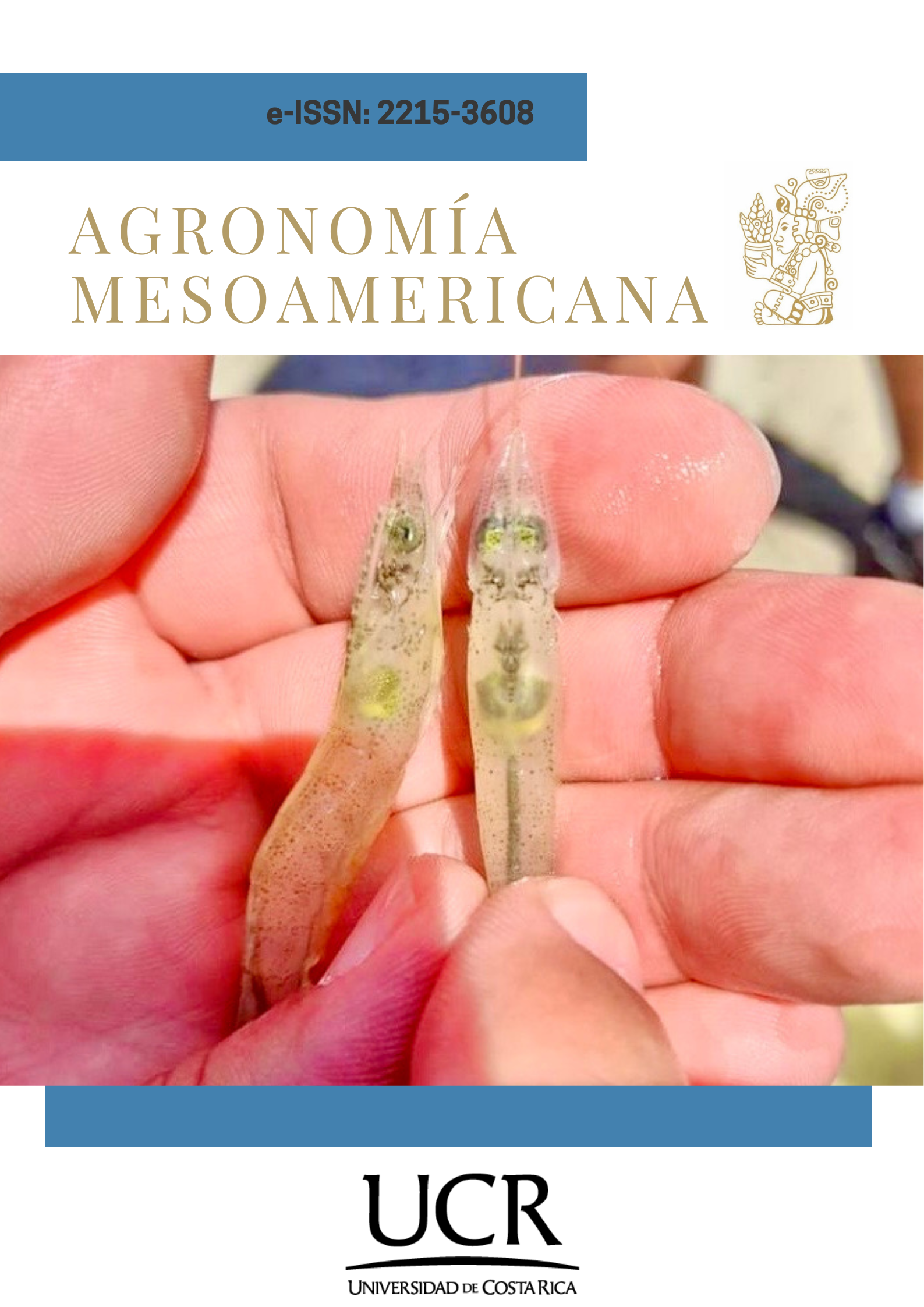
Downloads
Additional Files
Published
How to Cite
Issue
Section
License
Copyright (c) 2024 Nelson Peña-Navarro, Jorengeth Abad Rodríguez-Rodríguez, Rodolfo Umaña Castro, Carolina Sancho-Blanco, Karen Oviedo Bolaños, Cesar Marcial Escobedo-Bonilla

This work is licensed under a Creative Commons Attribution-NonCommercial-NoDerivatives 4.0 International License.
1. Proposed policy for open access journals
Authors who publish in this journal accept the following conditions:
a. Authors retain the copyright and assign to the journal the right to the first publication, with the work registered under the attribution, non-commercial and no-derivative license from Creative Commons, which allows third parties to use what has been published as long as they mention the authorship of the work and upon first publication in this journal, the work may not be used for commercial purposes and the publications may not be used to remix, transform or create another work.
b. Authors may enter into additional independent contractual arrangements for the non-exclusive distribution of the version of the article published in this journal (e.g., including it in an institutional repository or publishing it in a book) provided that they clearly indicate that the work was first published in this journal.
c. Authors are permitted and encouraged to publish their work on the Internet (e.g. on institutional or personal pages) before and during the review and publication process, as it may lead to productive exchanges and faster and wider dissemination of published work (see The Effect of Open Access).





